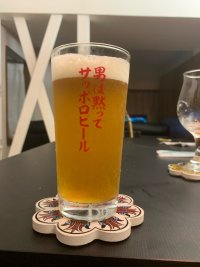worlddivides
Well-Known Member
This is intended to go into a 3 gallon keg, so it's intended to be 3.4 gallons (13 liters) going into the fermenter, but with an idea that roughly 0.4-0.5 gallons (1.5-1.8 liters or so) lost in trub, being absorbed by dry-hopping, etc. Currently leaning towards doing it BIAB (since I have experience with BIAB and am kind of on the fence on whether I want to get a Brewzilla or not and definitely am not going to get a separate three-vessel system at this point). Was originally going to buy distilled water and add brewing salts to make a rather simple West Coast IPA profile, but I'm planning to use tap water and just go from there. Am planning on buying my first corny keg and CO2 tank (have exclusively bottled up until now). I also am just planning on doing this with a normal PET fermenter and with 1 liter plastic bottles filled with frozen water to keep the temperature within the ideal range, though I am considering buying a plastic pressure fermentation vessel. Any advice would be appreciated
Session Juicy Citrus Tropical IPA Recipe (Edited according to advice):
Grain bill:
2.1kg Two-Row Malt (2L) (85.7% of grain bill)
150g Crystal 60L (6.1% of grain bill)
100g Carapils (4.1% of grain bill)
100g flaked wheat (4.1% of grain bill)
Mashed at: 65.5C for about 1 hour (8.2 liters of strike water)
Sparged at: 76C for about 30 minutes (12.3 liters of sparge water)
Total Water Volume If BIAB: 19.4 liters (no sparge, just drain/squeeze bag after mash)
Water Chemistry Adjustments (added before mash):
Half a Campden tablet
0.5 grams calcium chloride (dihydrate)
0.5 grams magnesium chloride
2 grams gypsum
Hops:
20 grams of Centennial (pellet) for 60 minutes (8.4% AA)
10 grams of Idaho 7 (pellet) for 15 minutes (13.1% AA)
10 grams of Idaho 7 (pellet) whirlpooled (starting at 82C for 15 minutes – 13.1% AA)
5 grams of Cryo-Citra (pellet) whirlpooled (starting at 82C for 15 minutes - 22.1% AA)
20 grams of Cryo-Citra (pellet) for 4 days (dry hopping – after fermentation ends - 22.1% AA)
25 grams of Cryo-Mosaic (pellet) for 4 days (dry hopping – after fermentation end - 20.3% AA)
Other:
Servomyces - add last 10 minutes of boil
Whirlfloc - add last 5 minutes of boil
Fermented with Safale US-05 at 18-20C for 2 weeks (last few days of that dry hopping)
Kegged, then carbonated to 2.5 CO2 levels.
Estimated results of:
SRM: 6
IBUs: 53
Original Gravity: 1.040
Final Gravity: 1.007
ABV: 4.38%
Session Juicy Citrus Tropical IPA Recipe (Edited according to advice):
Grain bill:
2.1kg Two-Row Malt (2L) (85.7% of grain bill)
150g Crystal 60L (6.1% of grain bill)
100g Carapils (4.1% of grain bill)
100g flaked wheat (4.1% of grain bill)
Mashed at: 65.5C for about 1 hour (8.2 liters of strike water)
Sparged at: 76C for about 30 minutes (12.3 liters of sparge water)
Total Water Volume If BIAB: 19.4 liters (no sparge, just drain/squeeze bag after mash)
Water Chemistry Adjustments (added before mash):
Half a Campden tablet
0.5 grams calcium chloride (dihydrate)
0.5 grams magnesium chloride
2 grams gypsum
Hops:
20 grams of Centennial (pellet) for 60 minutes (8.4% AA)
10 grams of Idaho 7 (pellet) for 15 minutes (13.1% AA)
10 grams of Idaho 7 (pellet) whirlpooled (starting at 82C for 15 minutes – 13.1% AA)
5 grams of Cryo-Citra (pellet) whirlpooled (starting at 82C for 15 minutes - 22.1% AA)
20 grams of Cryo-Citra (pellet) for 4 days (dry hopping – after fermentation ends - 22.1% AA)
25 grams of Cryo-Mosaic (pellet) for 4 days (dry hopping – after fermentation end - 20.3% AA)
Other:
Servomyces - add last 10 minutes of boil
Whirlfloc - add last 5 minutes of boil
Fermented with Safale US-05 at 18-20C for 2 weeks (last few days of that dry hopping)
Kegged, then carbonated to 2.5 CO2 levels.
Estimated results of:
SRM: 6
IBUs: 53
Original Gravity: 1.040
Final Gravity: 1.007
ABV: 4.38%
Last edited:













![Craft A Brew - Safale S-04 Dry Yeast - Fermentis - English Ale Dry Yeast - For English and American Ales and Hard Apple Ciders - Ingredients for Home Brewing - Beer Making Supplies - [1 Pack]](https://m.media-amazon.com/images/I/41fVGNh6JfL._SL500_.jpg)














































